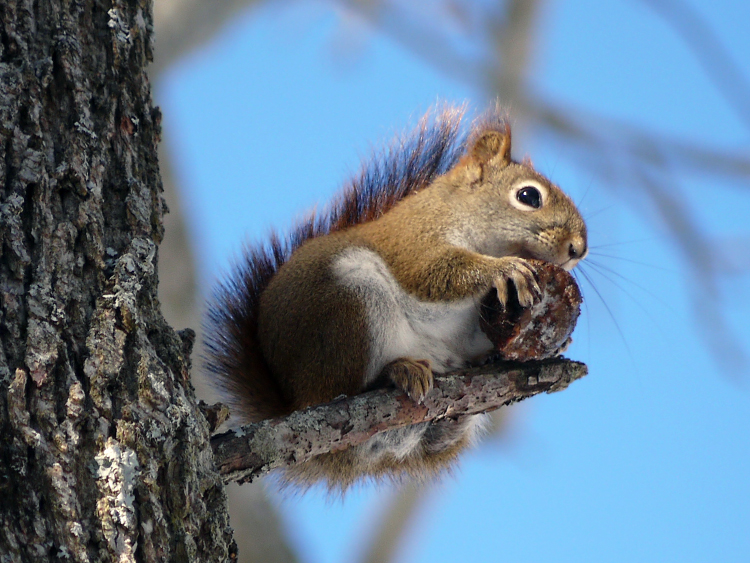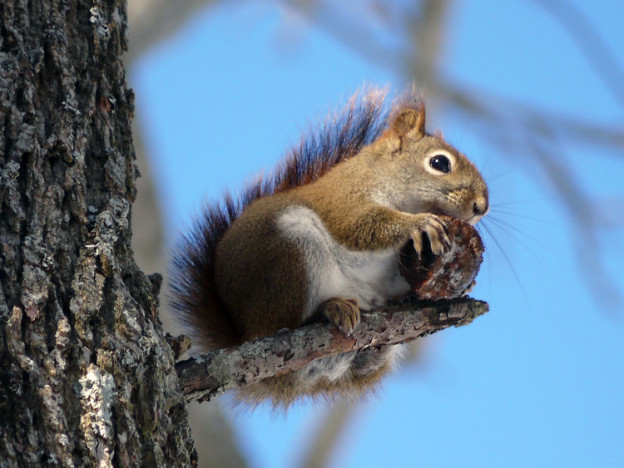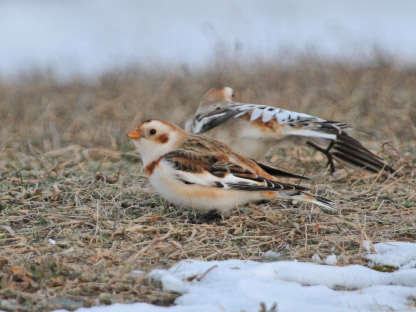January 21 is National Squirrel Appreciation day. We know it can be hard to appreciate these creatures sometimes, especially when they’re swinging acrobatically from a bird feeder. Here are seven interesting things you can observe about squirrels that might help you see them in a new light:

They can be black
Sometimes we hear reports from surprised people who have come across these darker squirrels. They aren’t a separate species—they’re actually members of our most common species, the eastern gray squirrel, but have more dark pigment. Scientists have identified two color variations: black and black-brown (which has a rusty underbelly).
Or white
The rare squirrel that appears all white is also technically a gray squirrel, but with a reduced amount of dark pigment. These squirrels are considered leucistic or partially albinistic. In order to be a true albino, the squirrel would also have pink eyes.
And don’t forget red!
These smaller rusty-colored squirrels belong to a separate species, the American red squirrel. They often feast on conifer cones. If you come across a pile of pinecone pieces in the woods, perhaps sitting on a stump, you know that a red squirrel has dined there.
They can “fly”
There are two squirrels in Massachusetts that people almost never see: northern and southern flying squirrels. They only come out at night, and often visit bird feeders—you can try spotting them using a red light, which won’t spook them like a regular light. They don’t actually fly, but glide on membranes of skin.
They have famous cousins
This Groundhog Day, celebrate squirrels! Although they lack fluffy tails, groundhogs belong to the squirrel family Sciuridae, as do prairie dogs and chipmunks.
They play tag
There are many reasons why squirrels chase each other. Red squirrels are territorial and will race after any squirrel that intrudes on their space. Gray squirrels don’t maintain territories, but will chase each other to assert dominance, as part of courtship, or (in the case of young squirrels) just for fun.
They really know their acorns
When a gray squirrel finds an acorn, it has two choices: it can eat it, or bury it for later consumption during cold weather. Some acorns, like the acorns of white oak, sprout quickly, which makes them less palatable. Gray squirrels tend to eat these acorns right away. They bury red oak acorns, which have a longer shelf life. In years when there are many white oak acorns, squirrels will use their sharp teeth to remove the embryos, enabling them to be stored for months without risk of germination
Squirrels are fascinating, complex animals, but there’s no denying that they sometimes come into conflict with people. Check out some tips for solving common situations.
Have you observed any interestingly-colored squirrels lately? Let us know!



 Snowy owls have been getting a lot of attention this season, mainly due to the large influx we are seeing in the Northeast.
Snowy owls have been getting a lot of attention this season, mainly due to the large influx we are seeing in the Northeast.